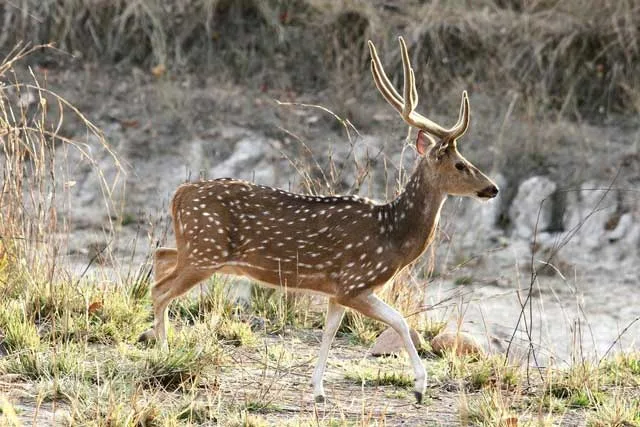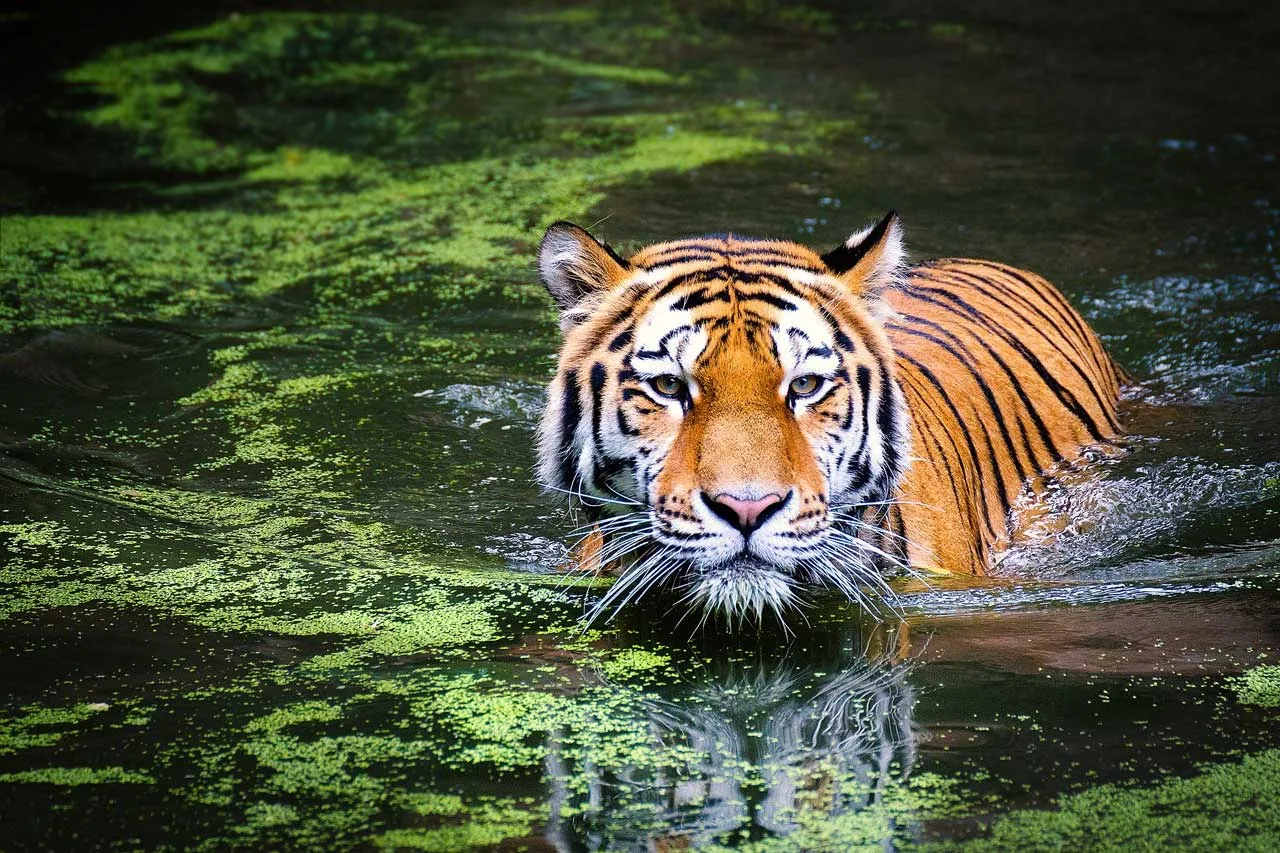Bandhavgarh National Park is
among the top most popular national parks in India that are situated in the
Vindhya Hills of the Umaria district of Madhya Pradesh.
It is declared as a national park
in the year1968 and spread across an area of 105 km². The Bandhavgarh National
Park is flourished with a large biodiversity of flora and fauna.
It has the highest density of tiger population in India. Sal and bamboo trees in the park increase natural
beauty. The area is full of tigers, deer, leopards, monkeys, foxes, and various
kinds of birds.
You Should Read: Best time to visit Satpura National Park
Bandhavgarh National Park's Flora & Fauna
Bandhavgarh National Park is
situated in the central India region so the animals found in central India can
be seen majorly. You can see here more than 22 species of mammals and 250
species of birds.
Tiger, Nilgai, Chinkara,
Chausingha, great Gaur, or Indian Bison, Wild Pigs, Spotted Deer, Sambar, and
Deer easily would be seen here.
The common birds that are easily seen
here are the Little Grebe, Egyptian Vulture, Common Peafowl, White-eyed
Buzzard, Black Kite, Parakeets, Kingfishers, Egret, lesser Adjutant, Sarus
Crane, Black Ibis, Lesser Whistling Teal,
Crested Serpent Eagle, Black Vulture,
Red Jungle Fowl, Dove, etc.
The Flora of the Bandhavgarh forest can
be classified as moist deciduous. Sal and bamboo forest occurs throughout the
valleys, giving way to the mixed forest. There are grassy meadow patches that
occur in the valley.
The common floral species that
you can see here are Saj, Dhaora, Tendu, Arjun, Amla, Palas, Salai, Mango,
Jamun, Babul, Banyan, Ber, Dhok, Jamun, and many more.
Also Check Out: Adventure Tourism in India
Bandhavgarh National Park Trip Review
The silence is deafening. There
is not a whisper in the Sal and Bamboo trees save an itinerant crow's unhappy
crowing. I find myself mumbling, 'perhaps the birds don't like the cold that's
ready to rip my nose apart…' Suddenly the focus shifts – from rubbing of palms
and chattering teeth to shadowy figures at the edge of the grassy bit.
The guide is pointing at a group
of Chinkara, spotted deer – who lift their heads at the sound of the Gypsy's
engine and resume doing whatever they were doing. They are used to it all, the
cold, the men, the Gypsy, the morning ritual.
But to us, they are significant –
they mark our first wildlife spotting in the forests of Bandhavgarh, deep in
central India. The deer are followed by more deer, the gaur (Indian bison), and
nilgai. The birds too wake up eventually and we are able to spot egrets, jungle
fowls, parakeets, and kingfishers.
The forest is swampy, dry, thick,
grassy, and rocky in turns. And the variety of vegetation and habitat has
allowed a diverse range of species to flourish. But the Big Beast is elusive…
It is not before we have been to
the forest thrice that we get our share of the completely hair-raising,
powerful experience of watching a tiger in the wild. The mesmerizing stripes
and the incredible size create deep awe – it is easy to understand why famous
shikaris couldn't lift their rifles faced with a specter like this.
 |
| A Click of Spotted Deer |
They say the jungles of Madhya Pradesh – Bandhavgarh in particular – are the best places to see the tiger. That may just be true – the population of the beast is good and the undergrowth is manageable. But even it were not for the tiger, the experience of the forest, whether Bandhavgarh, Kanha, or Panna, does something strange to you. You become part of the Creation, the Natural, and the Original.
And there are associations
galore. Are you remember Mowgli? The small-sized child, and his friend
Bagheera, the Black Panther? Or the horrible tiger - Sher Khan? The Jungle Book
was born here. This is the original Kipling Country. The kind of place that
inspires, holds mysteries and makes you wonder.
There are Kanha sal & bamboo
forests, and grasslands that spread over 940 square km were created under Project
Tiger in the year 1974. You can see here the rare Hardground Barasingha.
Bandhavgarh is smaller, but denser with wildlife and it is somewhat special as
the former hunting grounds of the maharaja of Rewa.
Bandhavgarh is situated in the Shahdol district which covers 448 square km, among the outlying hills of the
Vindhya Range. At the center of the park is Bandhavgarh hill, with a fort that
has been there since anybody can remember. There are references to it in
ancient texts, the Narad-Panch Ratra and the Siva Purana.
Here many dynasties have ruled
the fort, from the Maghas from the 1st century AD then Vakatakas from the 3rd
century after Vakatakas the Sengars from the 5th century, and from the
10th-century Kalchuris ruled on the fort.
In the 13th century, the Bagels
took over the fort and ruled from Bandhavgarh until 1617. When king
Vikramaditya Singh moved his capital to Rewa. The last rulers deserted the fort
in 1935.
You can see here a large number
of small hills that surrounded the fort. There are caves also that have
inscriptions that are tough to understand for normal visitors.
Panna is the third major tiger
reserve in Madhya Pradesh. The proximity to Khajuraho gives it a special
quality and it is an easy excursion from the temple town. The beautiful Ken
river flows through the forest, and it is easy to spot nilgai, chinkara,
sambar, chital, Chausingha, and wild boar in the sanctuary. The tiger is elusive
comparatively, but a patient man usually earns his due.
Of all the three places, the best
accommodation is perhaps at Bandhavgarh – which is another reason why it is
preferred. There are luxury camps run by quite a few operators – amongst them
scions of erstwhile Rewa royalty.
Wildlife viewing is either on an elephant's back or in a jeep. A guide always accompanies. Night drives are not
allowed. Though February to June is the period when wildlife viewing is best,
the colder months are better. The parks remain closed from July 1 to October 3.
For those who plan a visit to Bandhavgarh National Park, a stay of a minimum of three nights is recommended so that possibility of seeing the more exclusive animals will increase – although, of course, a brief visit is also would be special.
Do remember that the forest can
be extremely cold in the mornings and evenings, especially in a moving jeep and
in the winter months, so pack your bags accordingly. Respect the jungle, avoid
loud colors, speak softly, and don't throw garbage around. And, of course,
don't forget that pair of binoculars.
You Should Read: Chikmagalur Trip
Places to Visit in Bandhavgarh National Park
At the Bandhavgarh National Park,
there are lots of key places you should visit during your Bandhavgarh trip. There
are some more places you should visit in Bandhavgarh.
- Bari Gufa - The Giant Cave
- Three Cave Point - Ideal home for wild animals
- Rajbahera - Bandhaini Hillock View
- Sidhababa - The Holy Meadow
- Chakradhar - The Sprawling Meadow
- Gopalpur - A Place for Bird Watching
- Shesh Shaiya - Origin of River Charan Ganga
- Ketkiha - Pandanus Point
- Bhitari Bah - Tranquility in Wilderness
- Climber's Point - Nature's Beauty
- Sehra - The Fort View
- Mahaman Pond - Place to Quench the Thirst
- Baghel Museum -Personal items of King of Rewa
- Village Tala - An Indian village
- Jwalamukhi Temple- Goddess Jwalamukhi Temple
Tips for Jungle Trip in
Bandhavgarh National Park
- The best time for Jeep Safari is from 10 am to 4 pm.
- A forest department guide with you keeps your Jungle safari safer and more enjoyable.
- You should choose the Elephant safari which is a good option to visit the Jungle.
- Select the clothes that are normal and comfortable for you according to the weather. Don't wear so attractive colors such as red that attract the animals to you.
- Just watch the normal Jungle life of the animals in their natural habitat, and don't disturb them.
- Unnecessary luggage can disturbs you so keep only essential items with you.
- You must keep a first aid box with you, you are in the jungle and don't know what to happen next.
- Jungle safari will be incomplete without photography so you must carry a good quality camera to click the movements of the wildlife to keep memories for the future.
- You are in the Jungle, not in Zoo. So be patient to see the wildlife animals.
Bandhavgarh Best Time to Visit
The best time to visit
Bandhavgarh national park would be from February to April when the weather
would be pleasant and suitable for visiting the place. At that time animals
easily can be seen to get body warming in sunlight. September to October time
period also a good time to visit Bandhavgarh National Park.
May to June is the best
time to see tigers and other animals. Due to the summer season, animals come
near the water sources. Jungle safaris in summer can be tiring but worth it as
vegetation is dry and less dense also the animals stick around water sources so
it becomes very easy to spot them.
You Should Read: Brahmatal Trek
Bandhavgarh How to Reach
Bandhavgarh National Park is
situated in the Umaria district. Bandhavgarh is well connected to nearby towns
& cities such as Umariya, Khajuraho, Indore, etc. that making it easily
accessible for tourists and travelers.
Bandhavgarh National Park is only
35 km far away from the Umaria district and it will take one hour to reach there by road-ways. Katni will be the second nearer city that is about 102 km
far away from Bandhavgarh. The best option to go there is to book a taxi or
cab or use your private vehicle to go to this place.
By Road: Reaching Bandhavgarh
by road is a more convenient way as the destination is easily accessible from
nearby cities such as Umaria, Jabalpur, Katni, and Khajuraho.
By Air: The nearest airport is
situated in Khajuraho from the Bandhavgarh national park. Here you can get many
flights from nearby cities such as Delhi, Agra, Varanasi, Lucknow, Indore,
etc. This distance of Bandhavgarh is 270 Kms from the Khajuraho district.
By Rail: Bandhavgarh's nearest
railway station is Umaria. This distance of Bandhavgarh is 35 Kms from Umaria
city.
TouristBug's Recommendations
- Visit the park calmly and slowly, don't disturb the wildlife animals, and watch the natural beauty.
- Drive on the tracks or roads only. Off-road driving can be harmful to both sides.
- Keep a safe distance from wildlife animals. Keep in mind that you are in the Jungle, not in a zoo.
- Be a good tourist or visitor keep the park pollution-free and avoid spreading garbages here and there.
- Avoid using fire items in the forest. Smoking must be avoided during the visit to Jungle.
